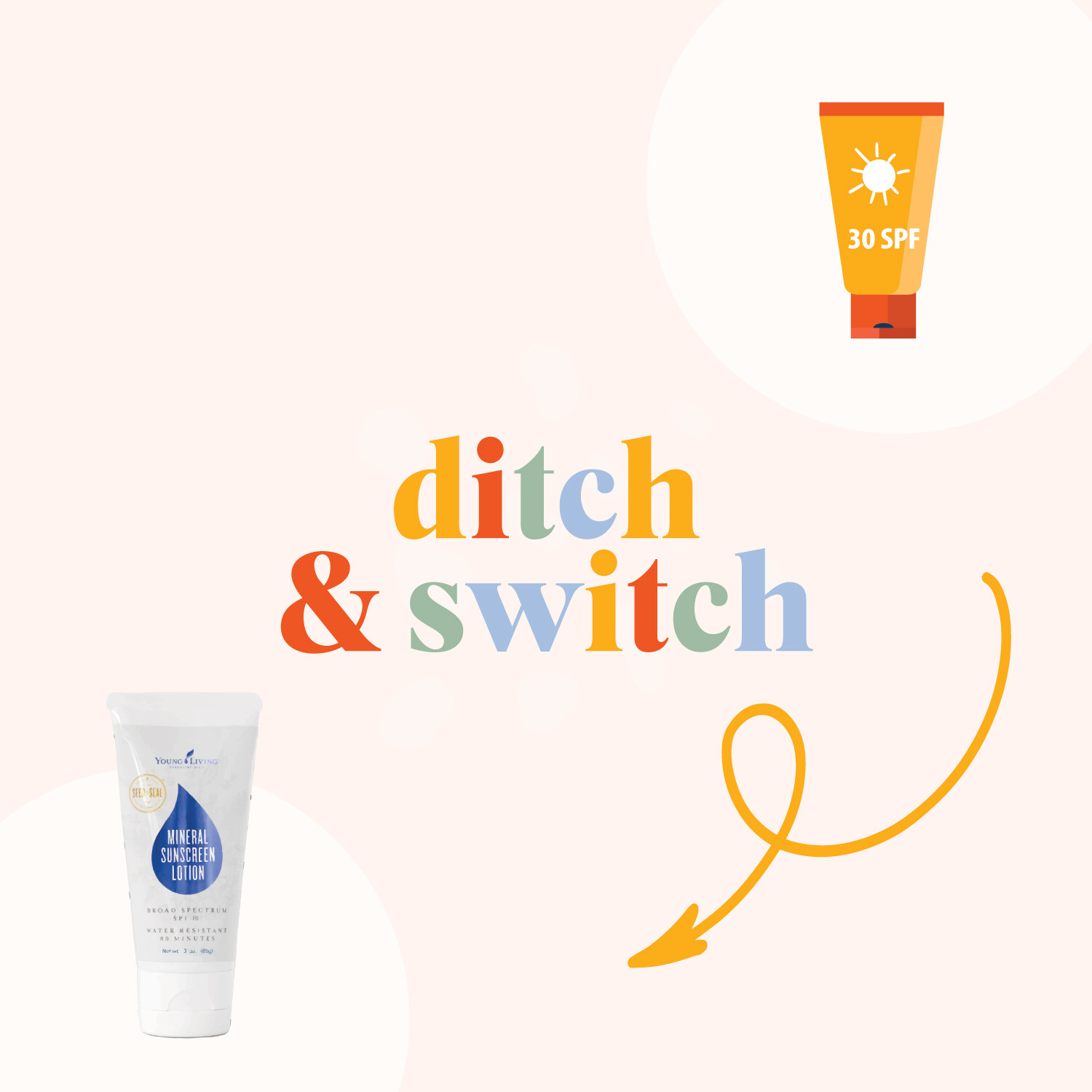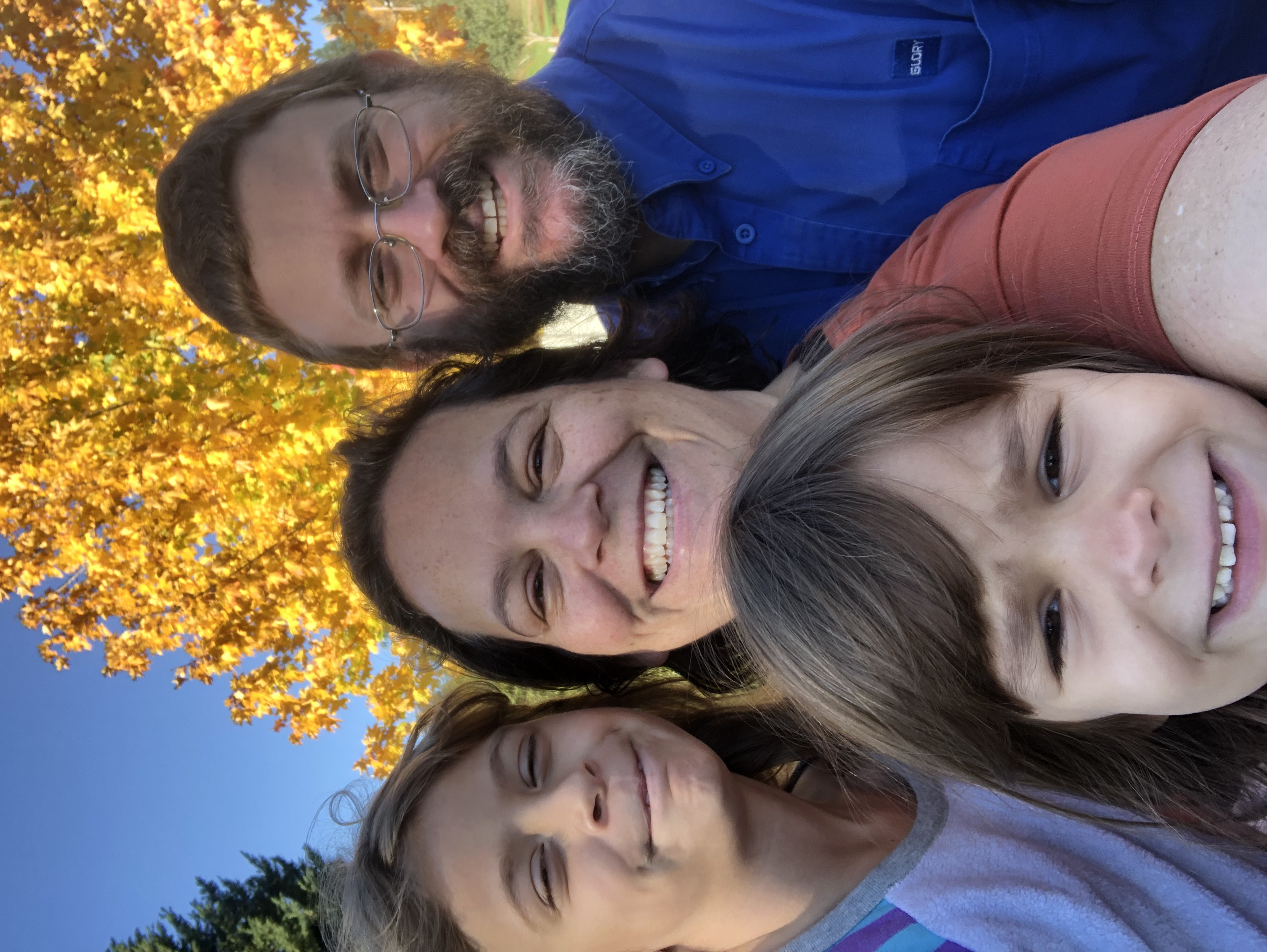Mineral Sunscreen
June Ditch & Switch

As the gatekeepers of our home we have such a great opportunity to bring in healthy products for ourselves and families!
Join us as we detox our beach bags this month and switch out convention chemical sunscreens for Young Living's Mineral Sunscreen. This switch is a simple one that can have a huge impact on your health and the health of your family.
- Oxybenzone - (sometimes called benzophenone-3) is one of the most commonly-used sunscreen chemicals, it is linked to endocrine disruption, organ system toxicity, contact allergies, and photoallergies, meaning exposure to light is required to generate an allergic response. In fact, the Environmental Working Group (EWG) recommends avoiding oxybenzone because of concerns that this ingredient may disrupt hormones and cause allergic skin reactions. Oxybenzone is also harmful to aquatic life, in 2018 Hawaii banned it to protect coral reefs.
- Octinoxate - commonly used UV filter that protects from UVB rays, but not UVA rays. It may be listed as OMC, methoxy-cinnamate or ethylhexyl methoxy-cinnamate and is lined to endocrine disruption as well as reproductive toxicity. Researchers have detected octinoxate in breast milk, urine, and blood. Like oxybenzone, this ingredient was targeted in Hawaii's ban, as it harms coral reefs.
- Homosalate - a common ingredient that absorbs only UVB rays to prevent direct skin exposure. Homosalate is linked to hormone disruption and may also enhance the absorption and penetration of pesticides, including bug sprays, as well as other harmful ingredients found within sunscreen.
- Contains naturally derived plant and mineral based ingredients, including non-nano zinc oxide, so it's not absorbed into the bloodstream.
- Available in broad-spectrum SPF 50 protection.
- Filled with skin-loving essential oils like Helichrysum, Carrot Seed, and Frankincense that put a protective barrier on your skin and help retain the skin's natural moisture while out in the sun.
- Has a non-greasy, lightweight formula that goes on smoothly (aka no white residue).
- Stays water and sweat resistant for 80 minutes
- Carries an official global certification from the National Skin Cancer Foundation and is recommended for daily use to help prevent skin cancer.
- It is safe for ALL skin types and won't clog pores.
- It is reef safe! An estimated 14,000 tons of sunscreen go into the ocean each year and most (all chemical based ones) kill coral reefs. It is such a problem that Hawaii passed a bill banning ingredients that harm coral reefs.
SPF (sun protection factor) is a measurement of sunburn protection. So if your skin would normally burn after 10 minutes in the sun, wearing an SPF 10 sunscreen would theoretically allow you to stay in the sun for 100 minutes (10 x 10) without burning. A higher SPF doesn't always equate to that much more protection. Also, note that SPF is a measure of protection against UVB rays only, and we need protection against UVA rays which is why we want "broad spectrum" sunscreen.
- SPF 15 blocks 93% of UVB rays
- SPF 30 blocks 97% of UVB rays
- SPF 50 blocks 98% of UVB rays
- SPF 100 blocks 99% of UVB rays
- Wash and prime your face, then apply the SPF 50 Mineral Sunscreen all over your face and rub it gently but completely. You may find it helpful to lightly set the sunscreen with a dusting of Diamond Dust before applying the rest of your makeup.
- Apply the rest of your Savvy Minerals as usual. Or, skip the full face look and tint your sunscreen with your Savvy Foundation. Quick and easy for summer days!
Want try SPF 50 Mineral Sunscreen, but don't know where to start, click here to get started.
As Always, I'm here to support you.
Your Oily Girlfriend
Jennifer


0 Comments